They say a picture is worth a thousand words. In the world of sales and marketing, this is doubly true. One cheap and easy way to take advantage of this is by using non-copyrighted images. You can use images to make just about any piece of text more effective and interesting to the reader, they can be placed in presentations, reports, projects, websites and blogs.
However, using images from the internet is not as easy as it may seem. Many people are not aware that most images are protected by copyright laws. As such, you need to either use images with the artist’s permission or rely on non-copyrighted images. But worry, not, we’re here to help you make sense of it all.
Table of Contents
What Are Non-Copyrighted Images?
You need permission to use any copyrighted image. However, understanding the laws for using images can be difficult. This is because there is a certain amount of wiggle room, and with the mass distribution of images on the internet, it’s no wonder we’re all asking the same question over and over again: Can I use that picture?
Copyright is primarily a legal right given to the authors of original works as a type of protection. The work may include fictional, dramatic, musical, artistic, or other certain intellectual work.
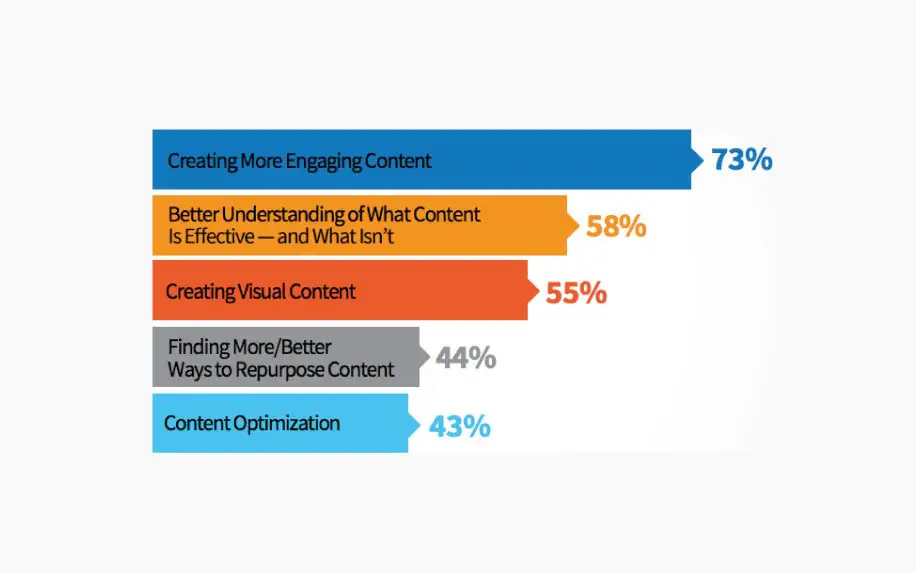
This law provides the author with special rights for the use and distribution of their original work. The author is also allowed to give away or sell those rights if they wish. Many professionals, like photographers or graphic designers earn money, by selling rights to their work.
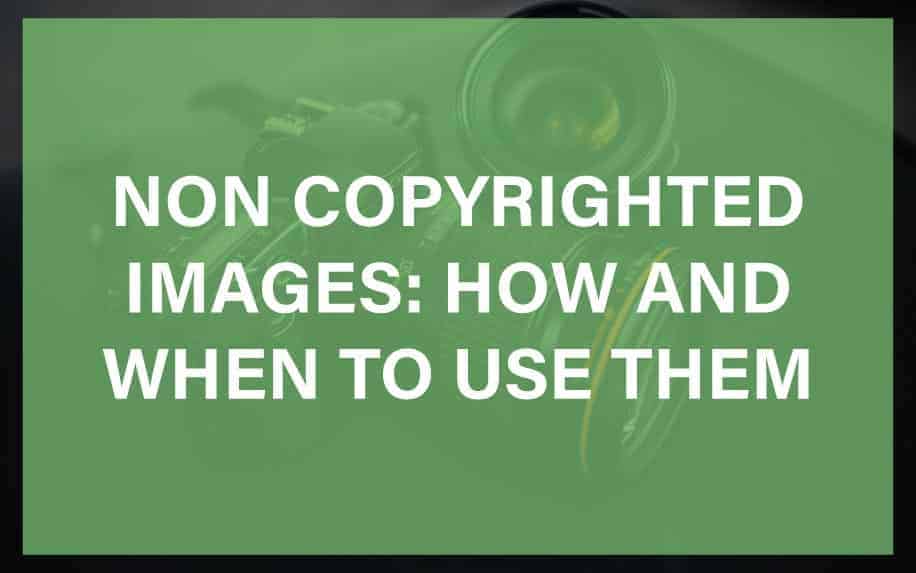
This also means that no one is allowed to use a copyrighted work without the permission of its owner. However, the exclusive rights are not unconditional. They are subject to limitations and exceptions to copyright law, including fair use.
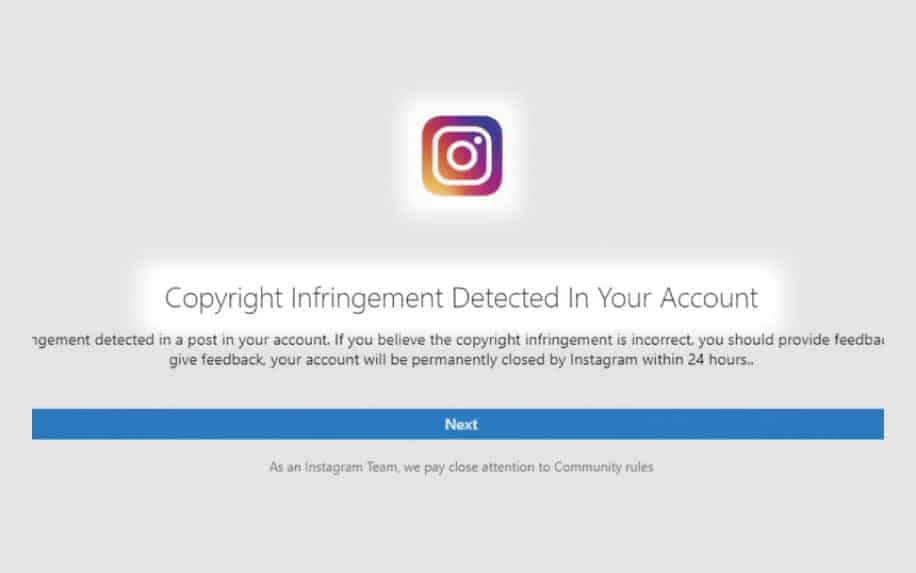
It’s also worth noting that the right is not permanent and is only granted for a limited time. Exclusive rights include four main things that the copyright holder has the right to do. They are able to:
- Duplicate the copyrighted work,
- Present the copyrighted work in public,
- Organise derivative works created on the copyrighted work,
- Rent or lend copies of the copyrighted work to the public to show the image.
Copyright Vs. Trademark
As mentioned before, copyright protects original works. In other words, copyright keeps any original work from being copied, plagiarised, distributed or used without permission.
A disadvantage of copyrighting your material is that this protection expires after a certain period of time, making it available to the public.
While copyrights and trademarks offer intellectual property protection, they protect different types of assets. Copyright is geared toward literary and artistic works, such as books and videos, which may require conversion services like PSD to HTML to be effectively presented online. A trademark protects items that help define a company brand, such as its logo.
Trademarks also protect smaller pieces of intellectual property. For example, the protection of words, symbols or logos distinguishes the company or manufacturer from others. This indicates the source of the merchandise or goods.
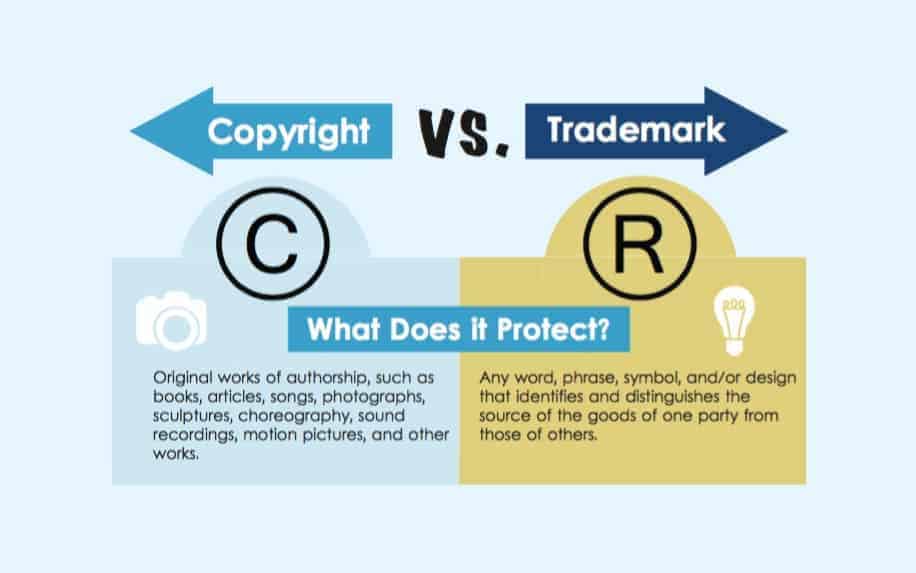
A benefit of trademarks is that they do not expire. If you trademark your work, it is yours for life.
Famous examples of trademarked company logos and slogans include:
- McDonald’s golden arches,
- Nike’s “Just Do it” slogan,
- Apple’s bitten apple logo,
- Lacoste’s crocodile,
- Amazon’s arrow pointing from A to Z.
Copyright limitations
A major limitation of copyright is that it only protects the expression of thoughts, but not the underlying ideas themselves. In other words, copyright is only capable of protecting work that is set into a certain form. In addition, copyright law does not protect any work that is too small or short to be distinctive. For instance, labels, phrases, headings and sentences.
Copyright is not permanent.
The expiration of copyright is made after a period of time that is determined based on the nature of the work. For instance, any work created during or after 1978 is eligible for the life of the author plus seventy years before it expires.
Regarding works of corporate authorship, the duration is 95 years from the date of publication or 120 years from the date of creation, whichever is shorter.
After the expiration of a copyrighted work, it is considered in the public domain. That is, part of the cultural heritage, and not subject to any copyright restrictions. In other words, anyone can use this work for both commercial and non-commercial advantage.
Comparing Non-Copyrighted Images and Copyrighted Images
A copyrighted image is an image that is owned and legally protected by its author. It cannot normally be used without permission. Copyright protection is granted to the creator of any image automatically once it is created.
Many people think that all images on the internet are non-copyrighted, but this is not the case.
Any image on the internet may or may not be copyrighted, and thus a person will need a license in order to use it. For an image to be free, the copyright holder must specifically state that the image is free to be used by anyone for any purpose.
On the other hand, non-copyrighted images, also known as public domain images, are defined as a picture, clip art or vector whose either copyright has terminated or did not exist from the start. Non-copyrighted images can be used by anyone for both personal and commercial intentions.
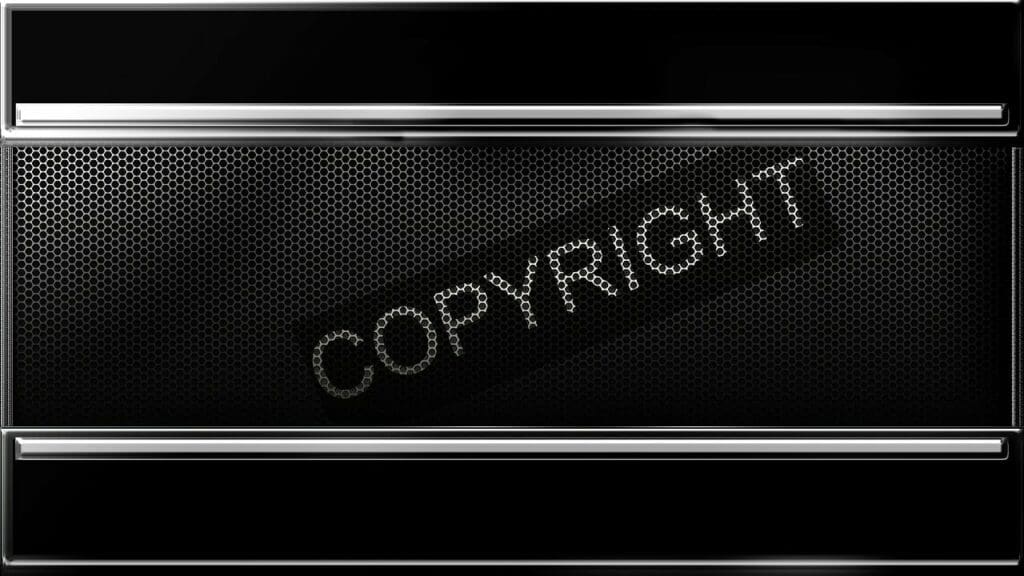
How to Use a Copyrighted Image
A good rule of thumb is that if you are in any doubt, it is always best to obtain permission. However, there are limited conditions when the person will not need permission.
First, if the image you are using is in the public domain. Also, a person may use an image without permission if the copyright holder has stated that the image is free to use. Those authors usually dedicate their work to the public domain
Moreover, several websites like Wikimedia Commons, SpaceX, Every Stock Photo, JÉSHOOTS, and Public Domain Pictures provide images that can be downloaded for their personal use, for instance, background wallpapers. However, they will prohibit the use of those images for commercial purposes, for example, images placed on business cards, websites, or posters.
Creative Commons
These websites are protected under Creative Commons.
The licenses are known as Creative Commons licenses and permit the authors of works to state which rights they reserve, and which rights they want to abandon for the benefit of receivers or other authors.
However, some limitations may include if an image can be used for personal or commercial intentions, or whether owners should be credited. The most common license is an Attribution license.
This license allows anyone to use an image in any way possible provided that they give the author credit.
Downsides to Using Non-Copyrighted Images
Without a doubt, using a non-copyrighted image is much easier and requires no charge compared to a copyrighted image. However, there are certain disadvantages that come with using non-copyrighted images. Check them out below.
- some of the non-copyrighted images can have poor quality compared to the copyrighted ones.
- Other high-quality non-copyrighted images may be very common.
- The effectiveness may be weakened the more times you see an image appearing in diverse places. For example, many business blogs use the same non-copyrighted images over and over again.
If you read a blog which is crammed full of generic stock images, you might hurt your brand image by making your content marketing seem cheap and low effort.
Fair Use of Copyrighted Images
Fair use is usually mistaken for free use, but this is not quite accurate.
The main aim of fair use is to permit restricted and rational uses for copyrighted work, provided that the owner’s commercial interests aren’t harmed.
In addition, it allows for uses that will benefit society and the public good. In order to know if the use of a particular image is fair use or not four factors should be considered:
- First and most importantly, the aim and character of the use should be examined. If the use is for education, non-profit, commentary, criticism or news-related purposes then it is considered fair use. However, commercial use is the opposite.
- Second, the nature of the copyrighted work; certain works including imaginary and unpublished work acquire a higher level of copyright protection compared to works that are real and broadly existing.
- The amount and substantiality of the portion used. Regarding fair use, it is better to use a small share of a certain work that shall be considered very small with respect to the whole work. However, this factor has some exceptions for works that cannot easily be broken down like images/ photos.
- Last but not least, the result of the use upon the potential market for or value of the copyrighted work. Fair use favours the use that had either a positive effect or an insignificant negative effect.
Where to Find Non-Copyrighted Images?
As mentioned earlier, numerous websites offer non-copyrighted images. For instance, public domain licensed creative commons or inexpensive stock images.
Therefore, no one would need to use a copyrighted image to enhance their site or make their presentation more visually appealing. Don’t be afraid to use images. The information above should help you make good decisions when searching for your next image.
Non-Copyrighted Images For Free
There are many online resources for finding non-copyrighted images, including sites such as Unsplash and Pixabay. Still, it’s important to check the exact licensing conditions before using images from these sites.
- Unsplash: A website filled with beautiful, high-resolution photographs that are free for personal and commercial use. All images are licensed under Unsplash’s custom license.
- Pixabay: Offers over 1.7 million free stock photos, vectors, and art illustrations. All images are released under Creative Commons CC0, which makes them safe to use without asking for permission or giving credit to the artist.
- Pexels: Provides high-quality and completely free stock photos licensed under the Pexels license, allowing use for personal and commercial purposes without attribution.
- Freepik: While it does have a premium option, Freepik offers many free vectors, photos, icons, and PSD files. However, attribution is required.
- Wikimedia Commons: A collection of over 60 million freely usable media files anyone can contribute. Each image has its licensing terms.
Remember to always check the specific licensing conditions for each photo, as some may require attribution or have other limitations on use. Also, be aware that while the image may be free to use, this does not mean that identifiable persons, logos, brands, etc. within the image are free to use without obtaining additional permissions.
How to Get Non-Copyright Images on Google?
To find non-copyrighted or royalty-free images on Google, you can follow these steps:
- Go to the Google Images website: https://www.google.com/imghp.
- Enter your desired search term or keyword into the search bar.
- Click on “Tools” located below the search bar. This will open a new menu with filtering options.
- In the second row of the menu, click on “Usage Rights.” A drop-down menu will appear with different usage rights options.
- Select the appropriate usage rights option based on your needs. For non-copyrighted or royalty-free images, you can choose one of the following options:
- “Labeled for noncommercial reuse”: This option will show images that can be used for non-commercial purposes without infringing copyright.
- “Labeled for reuse with modification”: This option will display images that can be modified and used for various purposes, including commercial projects, as long as attribution is provided.
- After selecting the desired usage rights option, Google will filter the search results to display images that match your chosen criteria.
Remember to review the specific terms and conditions associated with the images you find, as the licensing rights may vary depending on the source or website hosting the image. It’s always a good practice to double-check the usage rights and any applicable licenses before using an image for your intended purpose.
Where to Find Non-Copyright Background Images For Youtube?
To find non-copyright background images for YouTube, you can explore the following sources:
- Creative Commons Search: Use the Creative Commons Search tool (https://search.creativecommons.org/) to search for images with specific usage rights. It aggregates content from various platforms, including Flickr, Wikimedia Commons, and more, allowing you to filter images based on the desired license.
- Pixabay: Pixabay (https://pixabay.com/) is a popular platform that offers a wide range of high-quality non-copyright images, including backgrounds, under a Creative Commons CC0 license. These images can be used freely for personal or commercial purposes without attribution.
- Unsplash: Unsplash (https://unsplash.com/) provides a vast collection of high-resolution images, including backgrounds, that are free to use. Although attribution is appreciated, it is not required. You can search for specific themes or browse their extensive library.
- Pexels: Pexels (https://www.pexels.com/) offers a large selection of free stock photos and background images, all available under the Creative Commons CC0 license. They have a user-friendly search feature and provide high-quality images suitable for YouTube backgrounds.
- Canva: Canva (https://www.canva.com/) is a popular graphic design platform that provides a wide range of templates, including YouTube thumbnail and background designs. Canva offers a variety of free and paid elements, including non-copyrighted background images, that you can use in your YouTube channel’s artwork.
Remember to review the specific usage rights and licenses for each image you choose, even when using these platforms, as licensing terms may vary for individual images. It’s always a good practice to double-check the usage rights and any applicable licenses before using an image for your YouTube channel.
iStock Photos
iStock is an online stock photography provider, offering a wide array of royalty-free images, illustrations, and videos. It’s a subsidiary of Getty Images, one of the most prestigious and well-known stock media houses globally.
Here’s a breakdown of what iStock offers and you can use it for non-copyrighted images.
- Royalty-Free Media:
- iStock provides royalty-free media, which means that once you purchase a license for an image, you can use it multiple times without paying additional fees (though there may be some restrictions depending on the license type).
- Diverse Collection:
- iStock boasts a diverse collection of digital media, including photographs, vectors, illustrations, and videos, covering a broad range of topics and styles.
- Search and Filters:
- Users can easily search for specific types of media using keywords and apply filters to narrow down the results based on factors like orientation, color, size, and more.
- Affordable Options:
- iStock is known for its affordable pricing compared to other stock photo agencies. They offer various pricing models, including pay-per-download or subscription-based plans, to cater to different needs and budgets.
- Quality Content:
- iStock ensures that all of its content is of high quality. They have a review process where media submitted by contributors is vetted for quality and appropriateness.
- Credit System:
- iStock has a unique credit system where users can buy credits in bulk and then spend those credits on media downloads.
- Licensing Options:
- iStock offers different licensing options to accommodate various usage needs. Standard licenses cover most common uses, while extended licenses are available for more extensive usage rights.
- Contributor Community:
- Photographers, illustrators, and videographers can join iStock as contributors to earn money by licensing their work through the platform.
iStock is a reliable platform for individuals and businesses seeking quality images, illustrations, and videos for their marketing, advertising, or creative projects.
Non-Copyright Videos
Non-copyrighted videos, also known as public domain videos, are video materials that aren’t protected by intellectual property laws such as copyright, trademark, or patent laws. These videos are owned by the public, not by an individual author or artist. Anyone can use a public domain work without obtaining permission, but no one can ever own it.
There are several reasons why a video might be in the public domain:
- Expiration of Copyright: The copyright protection for the video has expired. In many countries, copyright expires 70 years after the death of the creator, but the laws vary significantly between countries.
- Waiver: The copyright owner has explicitly placed it into the public domain, waiving all of their rights to the work worldwide under copyright law.
- Ineligible for Copyright: The video is not eligible for copyright protection. In the United States, for example, any work created by the federal government, regardless of its nature, is in the public domain upon creation.
Non-copyrighted videos can be freely used for both personal and commercial purposes. This makes them a valuable resource for content creators, marketers, educators, and more. However, while the video itself may be non-copyrighted, users must ensure that any music, trademarks, or other elements within the video are also free from copyright or appropriately licensed.
Non-Copyright Video vs Non-Copyright Images
Obtaining non-copyrighted video can often be perceived as more difficult than obtaining non-copyrighted images for a few reasons, check out why below.
Quantity and Variety
There are simply more non-copyrighted images available than videos. Photography has been more accessible to the general public for a longer period than videography, and as a result, there are more repositories and collections of images in the public domain or under Creative Commons licenses.
Production Effort
Videos generally require more effort, equipment, and resources to produce than images. As a result, creators are more likely to seek compensation for their work and effort, which often involves applying for copyright protection.
Size and Hosting
Videos are larger in file size than images, making them more costly to host and distribute freely. Therefore, fewer websites offer free video content compared to image content.
Copyright Complexity
Videos often include multiple elements that could be subject to copyright, such as music or sound effects, making the copyright situation more complex.
While it can be more challenging to find non-copyrighted videos, it’s not always impossible. There are many resources available for finding non-copyrighted or Creative Commons-licensed videos, it might just take a little more searching to find what you’re looking for.
Where to Find Non-Copyright Videos?
There are several websites where you can find non-copyrighted or Creative Commons videos. These videos are typically free to use, although some may require attribution. Here are some sites where you can find video content that is non-copyrighted.
Pexels Videos: Pexels provides high-quality and completely free stock videos licensed under the Pexels license, which allows use for commercial and noncommercial purposes with no attribution required.
Pixabay: Similar to Pexels, Pixabay offers a vast array of high-quality free videos. You can use any Pixabay video without attribution in digital and printed form for personal and commercial use.
Videvo: Videvo offers free-stock video footage and motion graphics. They have various licenses, so you’ll need to check the specifics for each video, but many do not require attribution.
Vimeo Free HD Stock Footage Group: There are several groups on Vimeo where users upload videos specifically for others to use in their own projects. Again, be sure to check the licensing requirements for each video.
Internet Archive: The Internet Archive is a non-profit library of millions of free books, movies, software, music, websites, and more. They have a considerable collection of old movies and video clips, many of which are in the public domain.
Coverr: Coverr provides beautiful, free videos for your homepage. No attribution is required, but it’s appreciated.
Videezy: Videezy has a large collection of video clips that are free for personal and commercial use, although they appreciate attribution.
Remember, even if a video is labelled as non-copyrighted, it’s essential to check the licensing terms for each specific video before using it. Some videos may require attribution or have other restrictions on use. It’s crucial to respect the original creators’ rights and comply with any licensing terms and protect yourself from any liability of misuse.
Copyright Images Law UK
In the UK, copyright law protects original artistic works, including photographs and other images, from being used without permission from the copyright holder. Here are some key points regarding copyright law for images in the UK:
- Automatic Protection:
- Copyright protection is automatic upon the creation of an original image. There’s no need to register the copyright, though proving ownership might be easier if there’s a form of recorded evidence.
- Ownership:
- Generally, the creator of the image is the initial owner of the copyright. However, if the image is created as part of employment, the employer may own the copyright unless there’s an agreement to the contrary.
- Duration of Copyright:
- In the UK, copyright for photographs lasts for the life of the creator plus 70 years. However, the duration might vary depending on the nature of the image and when it was created.
- Rights of the Copyright Holder:
- The copyright holder has exclusive rights to copy the image, distribute copies of it, rent or lend the image, display or perform it in public, and create adaptations of the image.
- Licensing and Permissions:
- Copyright holders can license their images to others, specifying the terms under which the images may be used.
- Infringement:
- Unauthorized use, distribution, or reproduction of copyrighted images is considered infringement, and the copyright holder can take legal action against the infringer.
- Exceptions and Fair Dealing:
- There are some exceptions to copyright protection under UK law, known as “fair dealing” exceptions, which allow limited use of copyrighted images for purposes such as criticism, review, and news reporting.
- Moral Rights:
- Besides economic rights, copyright holders also have moral rights which include the right to attribution and the right to object to derogatory treatment of their work.
- Online Images:
- Images shared online are also protected by copyright law, and using images found on the internet without permission may constitute copyright infringement.
- Orphan Works:
- If the copyright owner cannot be identified or located, the work is considered an “orphan work.” The UK has a licensing scheme for orphan works managed by the Intellectual Property Office.
Understanding copyright law is crucial for both creators and users of images to ensure they are abiding by the law and respecting the rights of creators. If you need to use copyrighted images, it’s advisable to obtain the necessary permissions or licenses from the copyright holder or consider using images that are in the public domain or available under a Creative Commons license.
Copyright in Pictures
Copyright in pictures refers to the legal rights that creators have over their original photographic works. These rights are automatically conferred upon the creation of the image and typically cover the following areas:
- Ownership:
- The copyright of a picture usually belongs to the person who took the photograph. However, there could be exceptions, like if the photograph was taken by an employee as part of their job, in which case the employer might own the copyright.
- Exclusive Rights:
- Copyright provides the creator with exclusive rights to use, reproduce, distribute, and display the photograph, as well as to create derivative works based on it.
- Licensing and Permissions:
- The copyright owner has the authority to license the use of the photograph to others, under specific terms and conditions. They can also sell or transfer their copyright to someone else.
- Protection Duration:
- Copyright protection doesn’t last indefinitely. The duration of copyright varies by country but usually lasts for the life of the creator plus an additional number of years (often 50 to 70 years).
- Infringement:
- If someone uses, reproduces, distributes, or displays a copyrighted photograph without permission (and outside of fair use or fair dealing provisions), they may be infringing on the copyright and could be subject to legal action.
- Registration:
- While copyright is automatic, registering the copyright with the appropriate governmental authority can provide additional legal protections and is often necessary to enforce copyright in court.
- Fair Use/Fair Dealing:
- There are certain exceptions to copyright protection known as fair use (in the US) or fair dealing (in other countries) that allow limited use of copyrighted material without permission for purposes like education, commentary, parody, news reporting, and research.
- Public Domain:
- Once the copyright term expires, the photograph enters the public domain, and anyone can use it without seeking permission.
- Moral Rights:
- Besides economic rights, copyright laws in some countries also recognize moral rights, which protect the personal and reputational value of a work for the creator. These might include the right to attribution and the right to object to derogatory treatment of the work.
Copyright law aims to balance the interests of creators in protecting and monetizing their works with the broader public interest in access to creative works and the free flow of information. keep reading for advice on where to find non-copyrighted images and videos.
Where to Find Non-Copyright Movie Clips?
Finding non-copyrighted movie clips can be quite challenging since most film footage is protected under copyright law. However, there are several platforms where you can find movie clips that are either in the public domain or licensed for free use under creative commons licenses. Check them out below!
Internet Archive (archive.org): The Internet Archive hosts a large collection of public domain films, including older movies where the copyright has expired.
Public Domain Movies (publicdomainmovies.net): This site provides movies that are now in the public domain.
Pexels and Pixabay: These sites have collections of free-to-use video clips, though they are not typically from commercial movies.
Wikimedia Commons: This site has media files that are freely usable. However, they might not have many movie clips.
Vimeo and YouTube: Some creators share clips under Creative Commons licenses on these platforms. You can use the filters in the search bar to find Creative Commons-licensed content.
Remember that “non-copyrighted” usually refers to materials in the public domain, where the copyright has expired or is not applicable, or content that has been licensed for reuse, but sometimes under certain conditions.
Even when a work is labelled as free to use, it’s a good idea to read and understand the licensing terms. If you plan to use the clips in a way that could generate income, or in a public or commercial setting, it’s particularly important to ensure the licensing allows that. You may need to provide attribution or meet other requirements before using the content.
Non-Copyright Images with Clip Art
Clip art is a collection of images, illustrations, and symbols that can be used in a variety of creative projects. Non-copyrighted images from clip art are considered public domain and are free to use without obtaining permission or providing attribution.
Here are some resources where you can find non-copyrighted images or public-domain clip art:
- Openclipart: Openclipart is a community and collection of vector clip art that is free to use.
- Clker: Clker offers free clip art that is licensed under the public domain. You can use, modify, and distribute the images without asking for permission or providing attribution.
- Public Domain Vectors: This site offers thousands of copyright-free vector images.
- Pixabay: In addition to photos and videos, Pixabay also provides free-to-use vector graphics and illustrations.
- Pexels: Although Pexels is known for its high-quality photography, they also offer a collection of free-to-use illustrations.
- Vecteezy: While not all of Vecteezy’s content is free, they have a large collection of “free-to-use” vector art.
Remember that the terms of use can vary, and certain uses may still require attribution. As with any content, if you plan to use it for commercial purposes, it’s especially important to ensure you have the appropriate rights to do so.
Can I use AI to Create Non-Copyrighted Images?
Because AI technically isn’t a person, artist or content creator, it usually isn’t subject to copyright. However, the verdict is still out given that AI is relatively a new tool. As the law catches up with new technology it might become the case that AI images are still considered to be non-copyrighted images or vice-versa.
For the time being, however, you can use AI platforms such as Canva AI in order to generate non-copyrighted images. Simply start by inputting a text description of what you want the image to look like and browse through the options that it generates.
The Truth about Using Non-Copyrighted Images
There’s a lot of misunderstanding about how you can use non-copyright images online. Many people think that because an image has been published online then they are free to use it. However, this is not true. Most pictures online are copyrighted.
Copyright is legal protection provided to the authors of “original works of authorship” automatically once the work is created. In other words, regarding images, the second a person takes a photo, they own the copyright to it. Therefore, a copyrighted image is an image that is owned and legally protected by its holder and cannot be used by any other person unless it is altered or used according to the fair use doctrine.
On the other hand, non-copyright images are any pictures, clip art or vector whose either copyright has terminated or did not exist from the start. In general, when it comes to images, it is better to assume that the image is copyrighted whenever in doubt. Thus, permission from the creator/ author will be needed to use the image.
However, if you are not willing to take permission then make sure that the image you are about to take is a non-copyrighted image and that it fits clearly into one of the protected drives.


